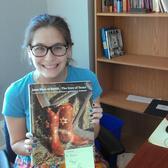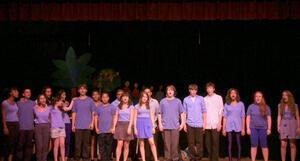Sosúa: Make a Better World
Greetings, JWA followers and supporters! My name is Miriam Cantor-Stone and I am honored to be one of JWA’s interns this summer. One of the advantages of being an intern is that there’s no rigid job description: you’re set seemingly random assignments, help with various tasks, and are given the opportunity to really explore the ins and outs of an organization.
For instance, Deputy Director Ellen Rothman handed me a DVD and a packet of papers one morning, explained their significance, and told me to take a look whenever I got a chance. So, after a morning of preparations for our workshop in New York City, I plugged in my headphones and watched Sosúa: Make a Better World, a film by Peter Miller and Renée Silverman.
While I wouldn’t call myself a scholar of the Shoah, also known as the Holocaust, I think it is fair to say I have thoroughly immersed myself in the history of that time period. In the course of my studies and time spent as a summer volunteer docent at the Holocaust Museum Houston, I found myself intrigued and horrified by the Evian Conference. The Evian Conference, which took place in 1938, was a gathering of world leaders to discuss the persecution of the Jewish people in Germany. The main question of the conference was essentially thus: What to do with the Jews? When I first studied the conference, my impression was that no country willingly opened its doors to the Jewish people of Eastern Europe. Sosúa proved me wrong.
Rafael Trujillo, president of the Dominican Republic for 30 years, was more than willing to allow Jews to immigrate to his country. It eventually came to light that he was welcoming to the Jews not because they were being persecuted; rather it was because they were white. All the while, Trujillo was murdering tens of thousands of Haitians because they were not white. Throughout the film, newsreels of the Jews' life in Sosúa, Dominican Republic, are shown, so we get a glimpse of at least that half of the story. I am ashamed to admit that, before watching the film, I did not know about the Jews who immigrated to Sosúa or those who were murdered before their arrival. I am grateful to know this history now.
However, this is not the main focus of the film. The documentarians follow a group of Dominican and Jewish teens in Washington Heights, New York, who are in a musical entitled Sosúa: Dare to Dance Together. The musical was produced at The YM & YWHA of Washington Heights and Inwood, an organization that is known for supporting children, teens, and families in the area. Tony Award-winning composer, director, and Jewess with attitude Liz Swados helms the production that brings together two communities of teenagers who live in the same NYC neighborhood but seldom interact. It was remarkable to watch the renowned Swados connect as she did with the Washington Heights teens. The film takes a tense turn when Swados must focus on another project for a few weeks, leaving the show in the hands of her assistant. It is clear the teens have made a lasting connection to Swados when rehearsals do not go nearly as smoothly without her guidance. When she returns, the show comes together without a hitch.
As a theatre buff who has worked with children and teens in the past, I enjoyed watching the teens embrace the power of theatre to create deep friendships and learn the importance of self-confidence. I delight in the combination of education and theatre, especially in a society where the arts are often pushed aside and seen as trivial and frivolous.
It is clear in interviews with some of the teens involved that this experience was not your average middle school or high school production. The young actors learn about each other’s cultures (through a Passover seder, Spanish lessons, and more) while learning about themselves. I am constantly amazed by the power of theatre, even after experiencing it personally throughout my education. Watching Liz Swados and her production team interact with the teens reminded me of all the incredible teachers and directors I had the pleasure of working with in high school and college. Theatre gave me self-confidence and taught me the importance of community, and it’s clear that the teens involved in Sosúa learned the same. This fascinating movie provides great insight into the magic of theater as well as into a little known aspect of Shoah history.
To find out more about the history, the musical, or purchase a copy of the film Sosúa: Make a Better World, go to http://sosuafilm.com/.








The settlement if Sosua figures prominently in a riveting new novel, "Forgiving Maximo Rothman" by AJ Sidransky